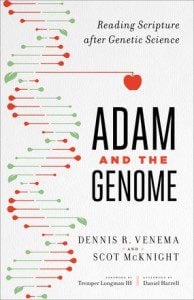 Wow, that’s a super sized boulder!
Wow, that’s a super sized boulder!
Joe Carter, at the Acton Institute blog, opines about economic theory, taking on the President’s State of the Union address, and then he suggests 10 things that folks ought to know about income inequality — esp what drives it, which he says is that good ol’ vice Envy. OK, this is quite a conservative economic theory at work here, but I wonder if you think obsession with income inequality is an envy-driven issue or is income inequality the real problem? Is the problem poverty? What’s the difference?
Income inequality is increasingly described as a threat both to our country’s economic well-being and to democracy itself. But you rarely hear explanations for why exactly it’s perceived as a threat. The reason is because concerns about income inequality are primarily driven by envy. Envy is generated by positional concerns only when the individual’s current situation is below his or her own aspiration level. That is a fancy way of saying that the “threat” of income inequality derives from the fact that some people want what other people have.
Christians, of course, should recognize this is a problem that is rooted in the human heart and not the Gini coefficient. Even if we reduced the level of income inequality it would not reduce the level of envy for our neighbor’s wealth.
Here’s a thought experiment to prove the point. Imagine you are presented with two possible worlds. In world A, you earn $110,000 a year while colleagues earn $200,000. In alternative world B, you earn $100,000 a year but your colleagues earn only $85,000. Which would you choose?
World A seems to be the better option since, in absolute terms, you have more money to spend. Butstudies have shown that about 50% of people prefer world B. Relative position in a social group proved to be more important than absolute income.
As long as we think we deserve more, we will become envious of those who have what we want.
Since concerns about income inequality are generally motivated by envy, it’s not surprising that the group who are most envious of the “rich” are the “near rich.” For example, a study found that of the Occupy Wall Street protestors — a group obsessed with inequality — over a third had household incomes over $100,000. Said one of the authors of the study, Ruth Milkman, “It’s a pretty affluent demographic and highly educated. Many were the children of the elite, if you will.”
From Karen:
I was slain in the spirit once. Splayed out. Laid flat. Old-fashioned revival time all out slain and down for the count.
I know, right?
Me. A journalist. Laying there on my back at the altar of God, staring at the lights of that big citified Seattle church with people dropping all around me like flies on a day in late Fall.
And for the record, yes, it was weird as H-E- Double-Toothpicks….
I can’t tell you about others – I can only speak from my own experience and it in my case, I did not fall to the ground in a fit of religious fervor. I was not pushed over by some slick-haired evangelical. I was simply at the altar praying with a girl whose name I did not know when a preacher walked by and lightly touched my forehead and buddy, I was gone quicker than a soldier on AWOL.
I have no idea how long I was down. I just remember it being a place of suspension. Aware and present but peaceful beyond consciousness.
Which has got me to thinking being Slain in the Spirit may very well be a way to solve some of our current societal problems….
Patrick Mitchel — the new perspective on Paul in pictures.
The world’s most beautiful train stations.
What the hunter-gatherers of Spain looked like (HT: LEMB):
A 7,000-year-old man whose bones were left behind in a Spanish cave had the dark skin of an African, but the blue eyes of a Scandinavian. He was a hunter-gatherer who ate a low-starch diet and couldn’t digest milk well — which meshes with the lifestyle that predated the rise of agriculture. But his immune system was already starting to adapt to a new lifestyle.
Sacred, cult prostitution in ancient Israel? No.
Indeed, archaeology has shown that Ashtoreth worship and associated rites of sacred prostitution were common throughout the ancient Mediterranean. At the Etruscan site of Pyrgi, excavators identified a temple dedicated to Ashtoreth that featured at least 17 small rooms that may have served as quarters for temple prostitutes. Similarly, at the site of Dura-Europos on the Euphrates, archaeologists uncovered a temple dedicated to Atargatis, the Aramaic goddess of love. Fronting the entrance to the temple were nearly a dozen small rooms, many with low benches. Although the rooms were used primarily for sacred meals, they may also have been reserved for the sexual services of women jailed in the temple for adultery. Such a situation prevailed at the temple of Apollo at Bulla Regia, where a woman was found buried with an inscription reading: “Adulteress. Prostitute. Seize (me), because I fled from Bulla Regia.”
Sacred prostitution, therefore, existed in much of the ancient world and reflected the ritual practices of Ashtoreth worship. In ancient Israel, however, sacred prostitution was simply a synonym for harlotry. Modern translations often unfortunately give another impression.
Read more about sacred prostitution in the ancient world in Edward Lipiński, “Cult Prostitution in Ancient Israel?” Biblical Archaeology Review, January/February 2014.











